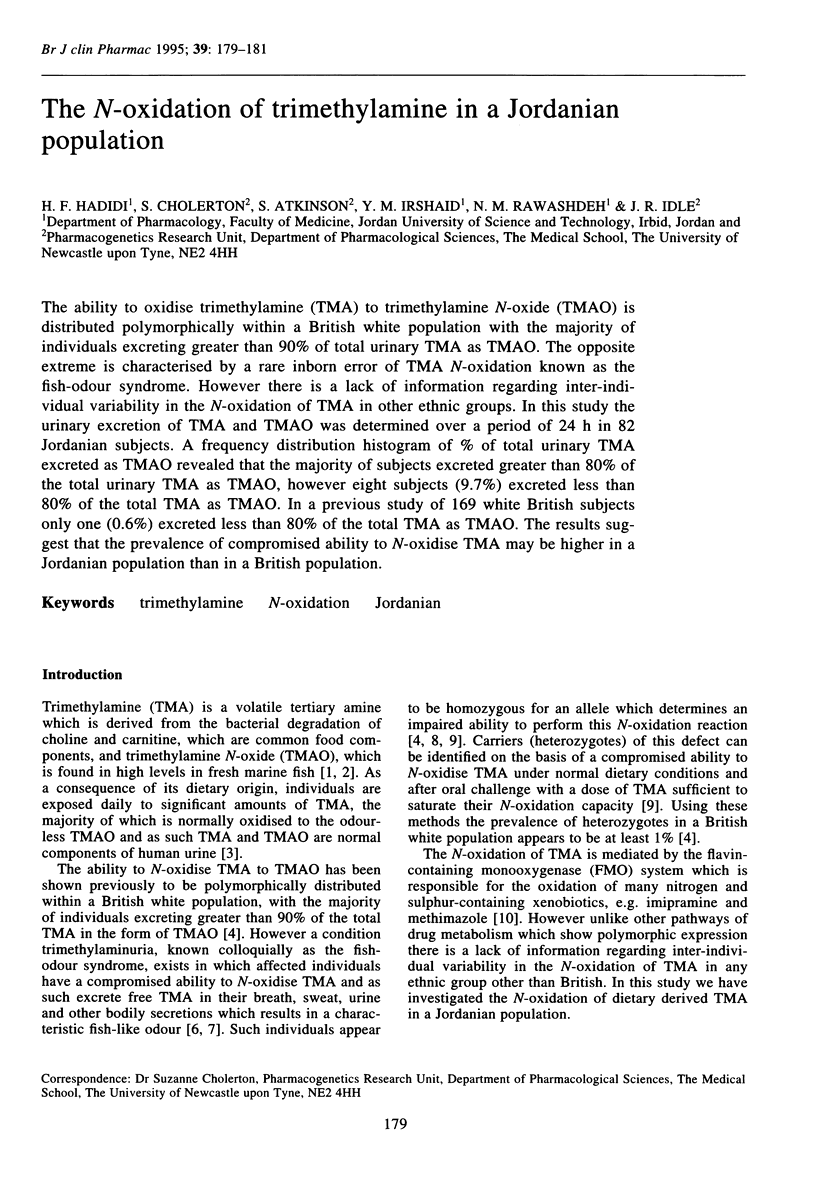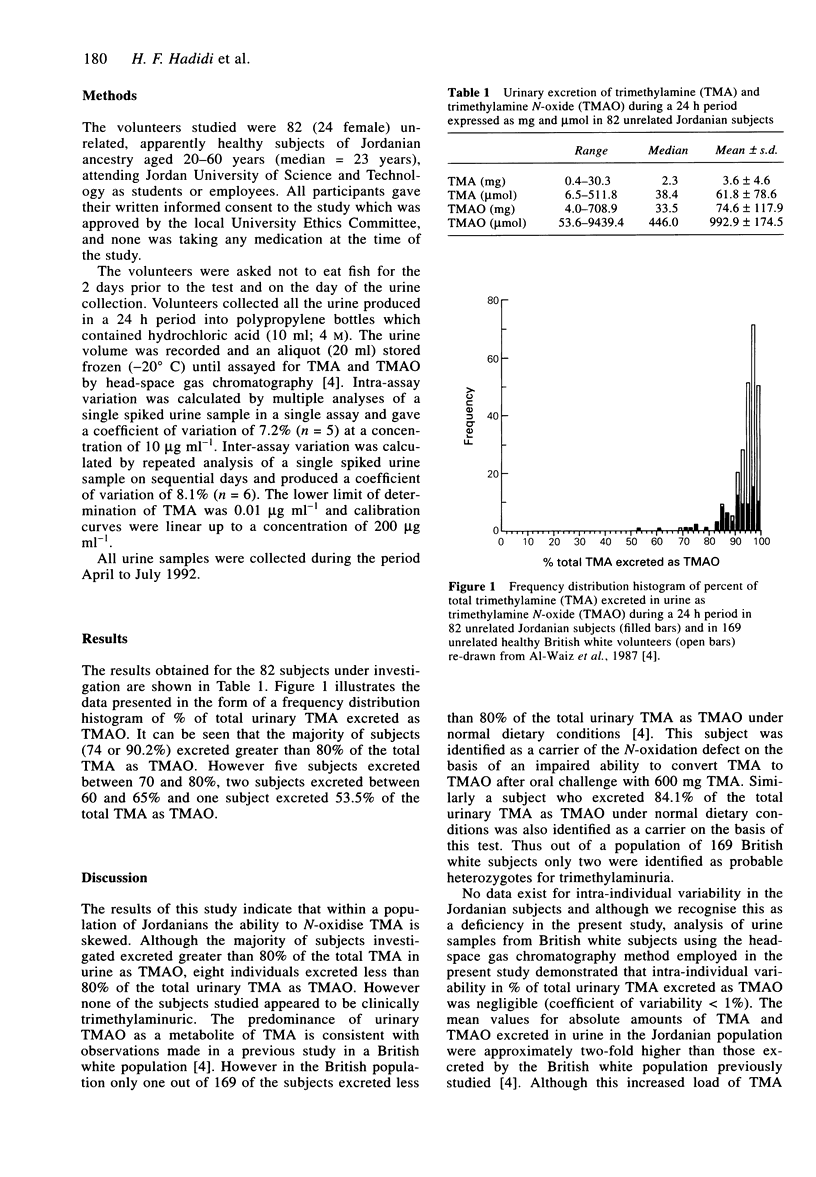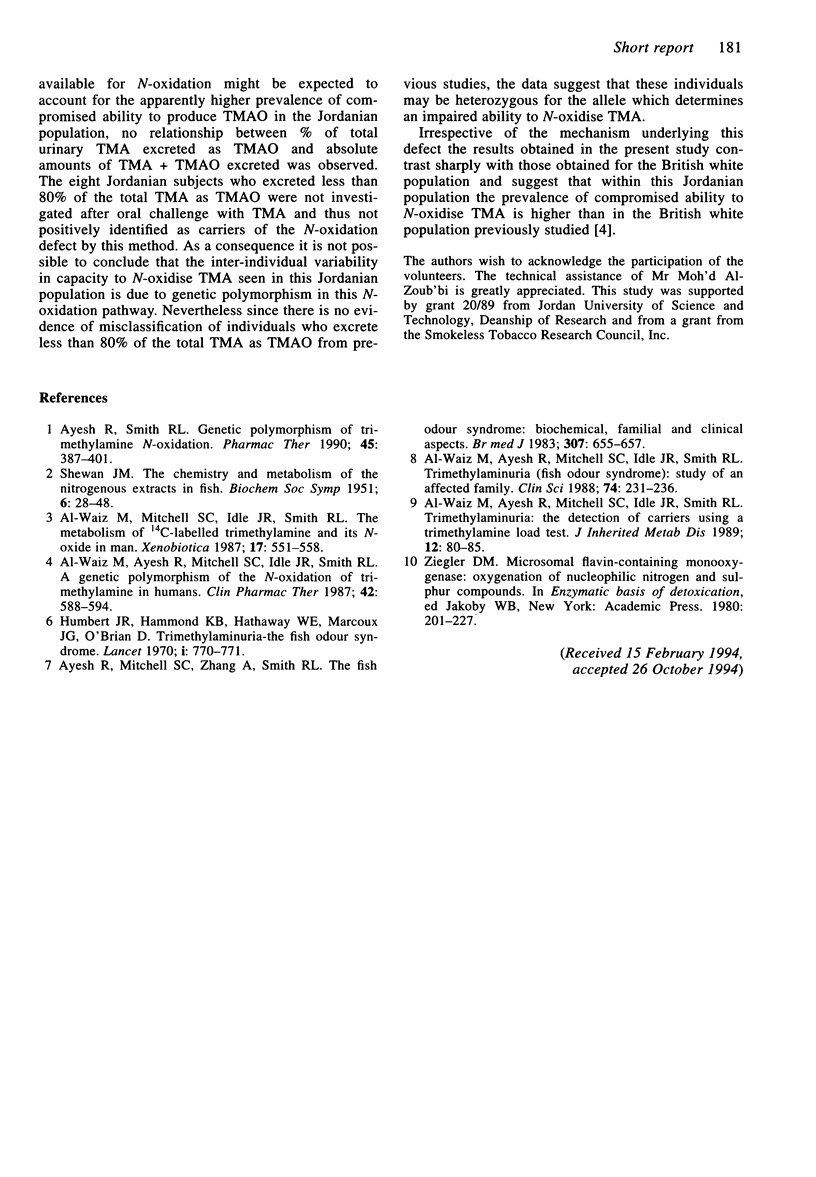Abstract
The ability to oxidise trimethylamine (TMA) to trimethylamine N-oxide (TMAO) is distributed polymorphically within a British white population with the majority of individuals excreting greater than 90% of total urinary TMA as TMAO. The opposite extreme is characterised by a rare inborn error of TMA N-oxidation known as the fish-odour syndrome. However there is a lack of information regarding inter-individual variability in the N-oxidation of TMA in other ethnic groups. In this study the urinary excretion of TMA and TMAO was determined over a period of 24 h in 82 Jordanian subjects. A frequency distribution histogram of % of total urinary TMA excreted as TMAO revealed that the majority of subjects excreted greater than 80% of the total urinary TMA as TMAO, however eight subjects (9.7%) excreted less than 80% of the total TMA as TMAO. In a previous study of 169 white British subjects only one (0.6%) excreted less than 80% of the total TMA as TMAO. The results suggest that the prevalence of compromised ability to N-oxidise TMA may be higher in a Jordanian population than in a British population.
Full text
PDF


Selected References
These references are in PubMed. This may not be the complete list of references from this article.
- Al-Waiz M., Ayesh R., Mitchell S. C., Idle J. R., Smith R. L. A genetic polymorphism of the N-oxidation of trimethylamine in humans. Clin Pharmacol Ther. 1987 Nov;42(5):588–594. doi: 10.1038/clpt.1987.201. [DOI] [PubMed] [Google Scholar]
- Al-Waiz M., Ayesh R., Mitchell S. C., Idle J. R., Smith R. L. Trimethylaminuria ('fish-odour syndrome'): a study of an affected family. Clin Sci (Lond) 1988 Mar;74(3):231–236. doi: 10.1042/cs0740231. [DOI] [PubMed] [Google Scholar]
- Al-Waiz M., Mitchell S. C., Idle J. R., Smith R. L. The metabolism of 14C-labelled trimethylamine and its N-oxide in man. Xenobiotica. 1987 May;17(5):551–558. doi: 10.3109/00498258709043962. [DOI] [PubMed] [Google Scholar]
- Ayesh R., Mitchell S. C., Zhang A., Smith R. L. The fish odour syndrome: biochemical, familial, and clinical aspects. BMJ. 1993 Sep 11;307(6905):655–657. doi: 10.1136/bmj.307.6905.655. [DOI] [PMC free article] [PubMed] [Google Scholar]
- Ayesh R., Smith R. L. Genetic polymorphism of trimethylamine N-oxidation. Pharmacol Ther. 1990;45(3):387–401. doi: 10.1016/0163-7258(90)90074-c. [DOI] [PubMed] [Google Scholar]
- Humbert J. A., Hammond K. B., Hathaway W. E. Trimethylaminuria: the fish-odour syndrome. Lancet. 1970 Oct 10;2(7676):770–771. doi: 10.1016/s0140-6736(70)90241-2. [DOI] [PubMed] [Google Scholar]
- al-Waiz M., Ayesh R., Mitchell S. C., Idle J. R., Smith R. L. Trimethylaminuria: the detection of carriers using a trimethylamine load test. J Inherit Metab Dis. 1989;12(1):80–85. doi: 10.1007/BF01805534. [DOI] [PubMed] [Google Scholar]


